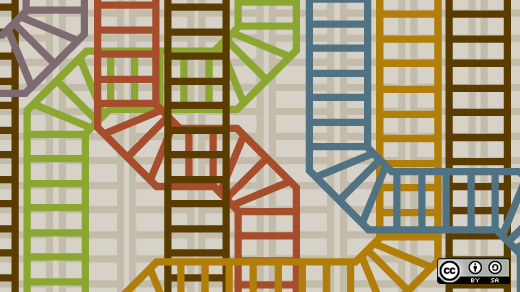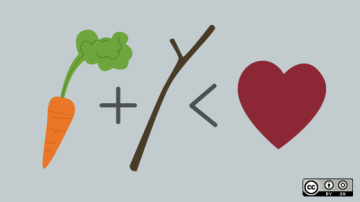For the second article in this series on Managing with Open Values, I spoke with DeLisa Alexander, Executive Vice President and Chief People Officer at Red Hat, specifically about how managing with open values works in that organization. DeLisa's team recently created and open sourced a new resource—the Open Management Practices—to help Red Hat managers understand their roles in an open organization and to empower Red Hat associates to help those managers practice openness.
I spoke with DeLisa, a 19-year veteran of Red Hat, about what led to the creation of the practices, how she and her team developed them, and how the organization plans to integrate them into its manager competencies. DeLisa came to Red Hat with a legal background and began her career at the company as inside counsel. The legal field is very hierarchical and not too open in its values (due in part to the confidentiality required of counsel). In our interview, DeLisa explains how, over the course of her career, she's been able to grow and guide the development of Red Hat's "bottom-up" organization.
I've transcribed parts of our interview below and edited them for readability.
Heidi: This interview series is about "managing with open values," and one of the first questions we've been asking interviewees is: What does that mean to you, to "manage according to open values"? As the executive overseeing the People team at Red Hat, why is this issue important to you?
DeLisa: Red Hat started as a movement, in part because of the internet and the connected, democratic nature the technology brought with it. Red Hat hired top contributors of open source communities, which meant that these associates, now hired into decision making roles, were "infused with open"—they lead like community members, not conventional executives. The expectation was that the culture supported collaboration, participation, and community—the values of the open source community. They brought the culture with them, in other words. Upholding and catalyzing this culture via the body of community members into a profitable company is very important, and very different from proprietary software companies.
Heidi: That's so interesting, because as a relatively new Red Hatter I didn't really see that connection as clearly as you explain it. Now I can better understand the passion that a movement started while intersecting with a corporate culture.
DeLisa: Yes. Having come from the law I felt the same way, and it took me a while to realize how it worked and what the expectations were.
As I navigated my way in the open source community culture, we started to see that those who were not coming from Red Hat communities didn't know how to navigate this new culture. So, we created the Open Decision Framework (ODF) to help them grow and align to Red Hat values.
Associates and leaders with decision making responsibilities needed to understand and practice open source practices because our culture is so important. In addition, when you use the ODF, you get better and more creative decisions—that might take longer to get, but then you don't have the change management, like at other companies, after the fact. The transparency offered by the framework aligned with the cultural expectations of the community. When people don't get what they expect, that's when things blow up. So the ODF helps associates and leaders navigate working and decision making in the Red Hat community in ways they expect.
Heidi: So Red Hat is essentially an open source community culture at scale.
DeLisa: Yes. Over time, we have had to develop and grow in ways that are consistent with our values. We've created tools and had projects that used open tools to do that. For example, when we created our "Why," our shared purpose, the proposed plan was going to take a year before it opened to the associates. The focus of the proposal was on the leaders coming up with it in a closed room—which wouldn't work at Red Hat. But we decide to involve the associates and do the change management synchronously with the activity. The power of participation will create something amazing (when it's important to do) for Red Hat, but you have to take it on faith, and you don't know when it's going to be done. The iterative process means that project plans are less defined and you have to trust: when it's baked, it's baked. You have to lean into the instinct that you will know when it's baked.
Heidi: From my own experience, I can see and feel that, from the associate perspective, there are large gains by being able to participate. But what are the benefits to the managers themselves when they manage with open values?
DeLisa: One of the most important values of open source community members is that they want to contribute right away; there is a meritocracy where title doesn't matter. That's important and that's also what Millennials expect for themselves. Millennials are working this way now. That means that managers at Red Hat had to learn how to manage Millennial-like people 20 years before Millennials came into the workforce! There is a significant advantage in that, because it helps to create a highly engaged workforce where people have a part in making a great team and a great organization. Managers also develop associate capabilities: their skill, their understanding of context, and purpose. Managers are helping "develop these muscles' [in their associates] while creating a learning zone at the same time.
Listen to DeLisa describe the importance and benefits of managing with open values
Heidi: In this way, managers are creating their own succession plans, because there isn't an us/them context that some conventional organizations have about leadership. In my experience working at conventional organizations, there is a distinct disjointedness between leaders and associates—either you are In the club, or you are not. Where there are open values, leaders and associates are one and the same, or at least the boundary is less distinct.
DeLisa: When I took this job, everyone was a leader. You might be a manager, a role that manages people, but everyone was expected to be a leader. We have tried to carefully define "leader" so that we don't lose the concept and impact the meritocracy.
Heidi: We've talked a little bit about the growth of Red Hat, and I wonder how you and your team have scaled the role of manager, and managing with open values, across the large and growing organization. What does it look like and what strategies are you working on?
DeLisa: As you know, things always look and work a little differently at Red Hat. Our competency model, for instance, helps people know what good looks like in their roles, and then we created the Open Decision Framework to help leaders make decisions in an open way. But we found that managers didn't understand what was expected of them in an open organization. Some brought with them ways of working from their former companies. And yet, as a people manager, they are a key leverage point for Red Hat, essentially responsible for supporting talent. The experience of the associate is greatly influenced by their manager and when you don't have managers who don't manage with open values, then the associates are not getting the full experience of working at an open organization.
We started at the beginning, asking ourselves "If everyone is a leader, do we even need people managers?" And we decided we needed the manager role. There are too many operationalization points regarding hiring, development, performance, etc. Our next step was the practices (do's and don'ts) and mindsets for managers. The Do's and Don'ts were communicated to Red Hat as a whole to get feedback, including all the geos, using a global face-to-face tour. These became the six Open Management Practices.
Heidi: Of the six Open Management Practices, which do you feel is most important?
DeLIsa: Probably the one that is most important to us today is "Creating an environment of respect, belonging, and mutual support." It is foundational for meritocracy and the idea that people can contribute even if their style of thinking, language, or remote work are differences. People need to feel like they belong because every associate has to feel comfortable contributing at our very, very best. This is on my mind all the time because there is a lot of research about it, one book for instance is The Fearless Organization by Amy C. Edmonson. Meritocracy is not just "being nice." It is linked to the learning organization—fail fast and often— and this is how the world's problems are getting solved these days.
Heidi: So we've talked about how the Open Management Practices benefit both associates and managers, and I'm curious about the topic of accountability. How is Red Hat helping to make managers and associates accountable for using these practices?
DeLisa: That's a great question and a hotly debated topic within my team. Part of the genesis for the Open Management Practices was to create accountability between associates and managers. We asked ourselves "how can we help people to want to be accountable?" We can't legislate this. These practices can't be done "because the People team told me to." We need to inspire ownership, so we made the idea of ownership part of the workshop conversation. The tool helps build a competence—"what good looks like"—by defining the practice. So, the People team asked managers, "Once you are enabled, would you be committed to these practices?" and 97% said "yes"! Therefore, we focused on enabling them knowing that the ownership and accountability would follow.
Listen to DeLisa describe how managers and associates co-created the Open Management Practices
In addition, the No. 1 request in the workshop was for a 360-degree feedback mechanism. We are excited to partner with TILT365 [Red Hat's vendor for personality style testing] to create a multi-factor survey that helped identify a questionnaire for management feedback. This makes the whole model and process very transparent. Associates know what the do's and don'ts for management practices are, and managers have feedback; leaders can support development plans for their managers. All this creates a full, virtuous cycle because the Open Management Practices created a path for managers to commit to their own development.
Listen to DeLisa describe how managing openly can increase commitment and accountability
Heidi: That's really interesting! I can see how the definition of the practices helped people understand what they were committing to, and the workshops and using the Open Decision Framework to get feedback from Red Hatters at all levels, helped to create the commitment needed in a natural way, as an obvious extension of the activity.
DeLisa, thank you for your time! I appreciate your taking the time to speak with me today.
DeLisa: I appreciate it, your time, and your interest in this! Thank you for having me.









1 Comment